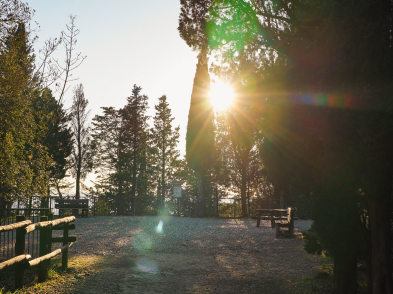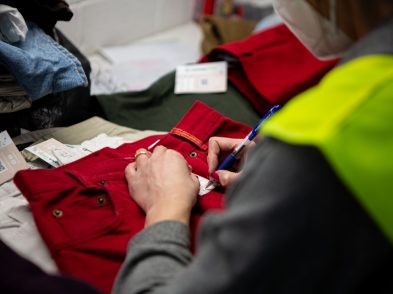
Incoming director of Palazzo Strozzi Arturo Galansino brings international experience and enthusiasm to the job; since 2013 he has been curator of exhibitions at the Royal Academy of Arts, London, and he has held curatorial positions at the Louvre and the National Gallery. Focusing on the needs of the local public as well as taking into account the international scope that Palazzo Strozzi has developed, he intends to continue the Fondazione’s commitment to openness and innovation, bridging the gap between the city’s Renaissance heritage and contemporary art.
Alexandra Korey: You are returning to Italy after successfully beginning your career abroad—a reverse ‘brain drain’. What attracted you back to Italy and to Palazzo Strozzi in Florence, in particular?
Arturo Galansino: Getting international experience is an important step for all curators, and we do see many Italians of my generation in the cultural sector leaving the country for this reason. I hope that we will see more of us returning soon. It’s an honour to be able to return and to have the opportunity to run a place like Palazzo Strozzi.
Coming here from London, I am impressed by the attendance figures at Palazzo Strozzi, which are incredible for a small city like Florence. Also, people love this place: we have a core of local visitors for whom we must work, but we also need to extend this core by working on improving communication, attracting young people, and especially by innovating and creating high-quality cultural products so that people keep coming back. We have to remember that Palazzo Strozzi is a young institution that has achieved a lot in a short period of time. Of course there is still plenty to be done!
AK: You’ve worked on very successful exhibitions abroad. What is the key to success that you might replicate here?
AG: I was very lucky to be able to work on some very successful projects at the Louvre, the Royal Academy and the National Gallery. At these institutions, the attendance numbers are already very high, so we started with an advantage, and then we created some landmark shows with an eye to the public. Outside of Italy, I learned that one can create highly scholarly but truly accessible shows—and I think this is the first key to success. The second key, so to speak, is quality. The museum-going public is smart, and it wants to come out of an exhibition having learned something further, but it also recognizes good quality. So quality and accessibility combined make for great exhibitions.
AK: Which require a high budget, of course!
AG: No budget is ever enough. All exhibitions have budget issues, but this doesn’t scare me; it happens wherever you are in the world. Quality requires budget mainly because of the costs of transport and insurance. For instance, in Italy, one of the problems is the lack of a public insurance system for art loans. In the United Kingdom, the Arts Council offers a government indemnity scheme, through which museums can borrow works, even from other countries, and the risk is carried by the Government, rather than by private insurers, which helps to keep the cost down. But before budget we just need to start with a great idea. If they see a good project, sponsors will help you. Fondazione Palazzo Strozzi is content driven, so I think we’ll be successful in finding sponsors.
AK: Can you tell us what great content we can expect to see soon?
AG: Soon we will be announcing the programme for 2016 and beyond, and I can promise it will be very exciting. One theme for me is to fill a gap in Florence—modern and contemporary art are important for this ‘Old Master’ city, which has already hosted some great shows, like the one currently at Forte Belvedere [of works by Antony Gormley], as well as those at the Strozzina in the past. We’re starting out with some modern exhibitions, though of course we have some important Renaissance exhibitions in the pipeline for future years.

AK: That’s one of the things that I love about Palazzo Strozzi—the way that it mixes Renaissance and contemporary, and also creates an always-open cultural space for us locals. How do you plan to continue this community outreach and connection with the city?
AG: One of the greatest credits of my predecessor, James Bradburne, is having opened up this palazzo and courtyard to the city. I hope to see it always full of people, and have some ideas to lend it further appeal, by offering new services as well as continuing the cultural offerings.
AK: How do you make a museum part of people’s everyday life?
AG: It’s not easy to make museum going a daily part of life anywhere in the world, and in Florence and Italy we face different challenges than in other countries. Dropping into a museum for leisure activities is not part of the Italian lifestyle yet. While the idea of opening a restaurant in a museum is still uncommon in Italy, in London or Paris it’s almost the first thing they do, and the museum thus becomes a hub of social life. Museum life is not at all boring, but in Italy many think that you can’t have fun in museums. Places like the MOMA in New York or the Centre Georges Pompidou in Paris are so cool that everyone wants to go there—and share their experiences on social media. So we have to figure out how to make this place ‘cooler.’
We also have to remember that Florence is not New York. I don’t mean this in a negative way, but rather in recognition of this place and its society. We simply can’t keep up the same rhythm as the MOMA; we can be very satisfied with the success of single events or exhibitions. In order to ensure this continued success, we need to offer people something new and of excellent quality; to work to fill the gap between Florence and the contemporary; and to make this place truly alive.
Read our exit interview with outgoing director James Bradburne here.







